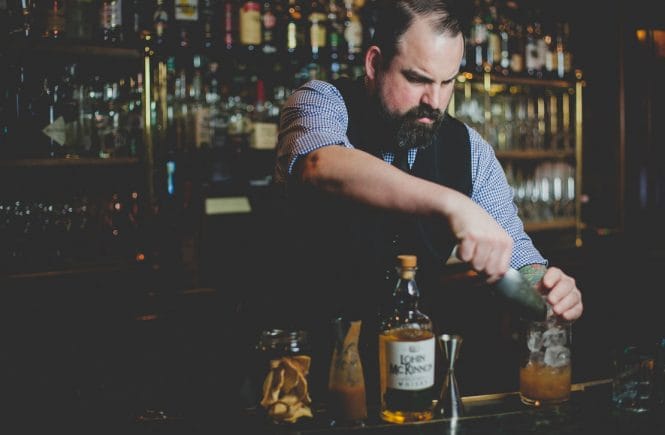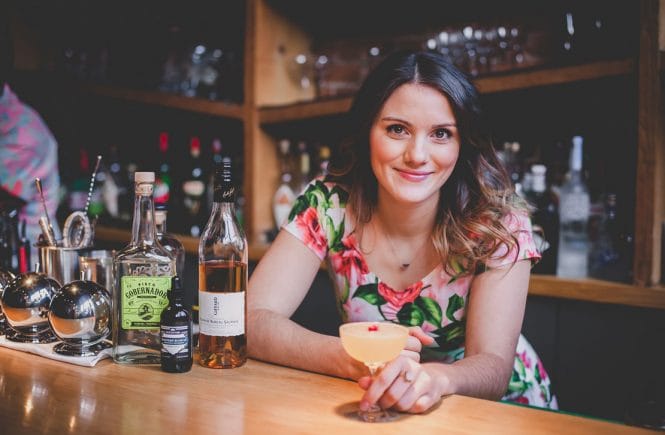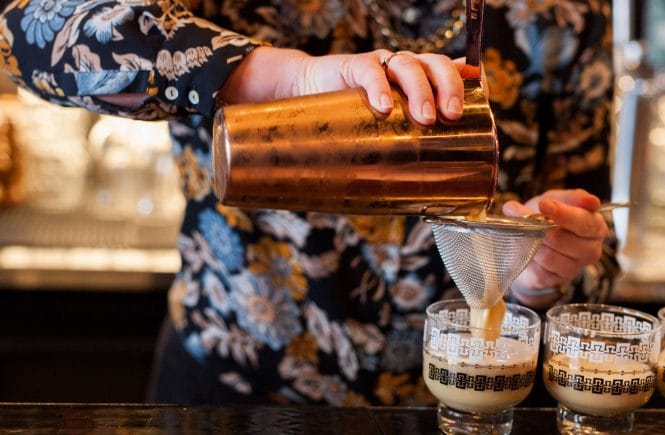
Legendary bartender Jim Meehan envisions a future where humanity is as important as the craft.
It’s not about the fancy glassware, or the high-tech centrifuge, or the exotic, impossible-to-source-spirit, not any more. It’s all about the people.
“Now that it’s no longer an arms race to assemble the cocktail, the other things matter more,” says Jim Meehan.
Meehan is one of the world’s pre-eminent bartenders. He has worked at some of the world’s most renowned cocktail bars, including New York’s Gramercy Tavern and Pegu Club, and in 2007, he opened the groundbreaking speakeasy PDT (Please Don’t Tell). Now based in Portland, Ore., he visited Vancouver recently to promote his essential new book, Meehan’s Bartender Manual (Ten Speed Press), and to help kick off this year’s Diageo World Class competition with the help of Bittered Sling Extracts.
And he was happy to share his thoughts on how bartending has changed – for the better, mostly – and how it needs to keep evolving.

Even just a decade ago, he recalls, just making a cool drink was hard. “Everything was a special order and it was prohibitively expensive. You had to be resourceful and well-funded, and you needed an audience that would drink something that wasn’t made with vodka,” he recalls.
“Fast forward 10 or 12 years, and 21-year-olds want to drink Negronis and Sazeracs, and there are a million bitters,” he says. “The resources are now there. The points of differences are no longer technique driven or liquid driven, they’re humanity driven.”
It’s time, he says, to take a step back and remember that the point of cocktail culture isn’t just what’s in the glass, but the service and conviviality that go along with it.
“Before, we would try to turn bartenders into mixologists,” he says. “Now we’re trying to turn mixologists into bartenders.”
It’s not just the customers who need to be taken care of, he notes. It’s the bartenders and servers, too.
As more and more people go into bartending as a serious, full-time career, they are also realizing how physically and emotionally demanding a business it can be. That’s why, instead of tempting bartenders with cool tools as they once did, savvy brands now offer lifestyle coaching, fitness instruction, stress management and nutritional education.
Most bartenders work nights, weekends and holidays, making normal relationships hard to maintain. Their jobs require endless repetitive motions – shaking, stirring, lifting – that can cause lasting injuries. The job comes with plenty of stress, too. Few restaurants or bars can afford benefits like paid maternity leave, and there’s plenty of abuse to deal with.
And, Meehan points out, “The one thing that everyone keeps missing is alcohol abuse.” In fact, he blames alcohol for playing a large part in the industry’s stories of harassment and assault that have trickled out through the #MeToo movement.
“You won’t get rid of sexual abuse or assault when you get rid of alcohol abuse, but you can stem it,” he says.
That goes for both customers and staff alike. He thinks it’s high time to get rid of shots, boomerangs, laybacks, bartender’s handshakes and “pouring alcohol into people’s faces.”
“Having one drink a day I think is great,” he says. “But the third drink is not so great, and the fourth drink is definitely not great. Being wasted needs to be a shameful thing, not what we’re going for.”
If Meehan has his way, one day, every bar will be able to make a decent drink. The bars that stand out will be the ones that treat their staff and their customers thoughtfully, kindly and graciously.
After all, he says, “People who sit at our bars and drink our drinks, you’re the reason we do what we do.”
—by Joanne Sasvari




